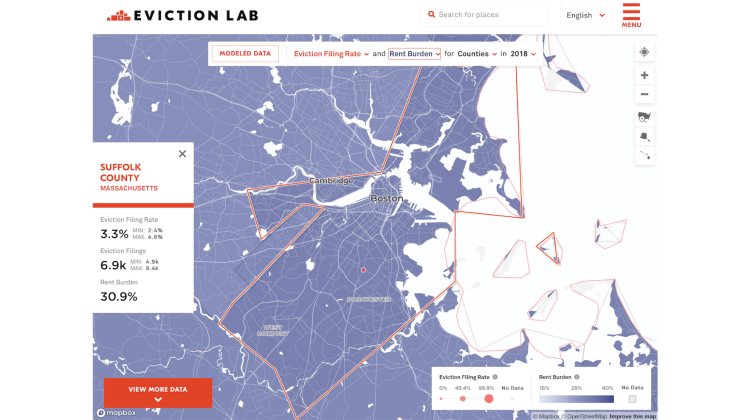Understanding Differences in Eviction Filing Outcomes

Map of the Greater Boston Area with eviction data overlaid. Credit: Eviction Lab
In a typical year, landlords file 3.6 million eviction cases in the United States. This eviction crisis has generated a large body of research: studying the uneven distribution across social groups, the health and economic impacts of the eviction, and the propensity of fillings associated with particular landlords and in specific locations. A new article for Law and Social Inquiry examines what characteristics associated with eviction filings lead to forced displacement.
The paper, co-authored by DUSP’s Justin Steil and Georgetown Law’s Nicole Summers, utilizes regression analyses of eviction filings in the Greater Boston Area to determine how and why certain eviction filings result in forced tenant moves and others do not. “We were very interested in understanding the role of procedural pathways in eviction filing outcomes,” say Summers and Steil. “For example, are certain pathways more common than others and what characteristics are associated with different pathways to forced tenant moves? These questions have enormous implications for how we measure the frequency of forced tenant moves following a court filing, understand tenants’ vulnerability to them, and design effective policy interventions to reduce their prevalence.”
Their research reveals the limitations of existing measurements of eviction, overlooked areas in the literature on eviction, the importance of ownership structure in eviction outcomes, as well as pathways to enhance our understanding of evictions and forge more effective policy measures.
Steil is an Associate Professor of Law and Urban Planning. As a lawyer, a paramedic, and an urban planner, his research focuses on spatial dimensions of inequality. Summers is Associate Professor of Law at Georgetown Law. Her research focuses primarily on issues related to housing, including eviction, regulation of substandard conditions, and fair housing law.


